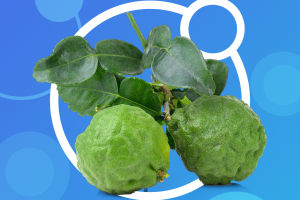Coconut is a plant of the palm family and the plant grows very tall, 15-30 meters tall.
Coconut is distributed from Indonesia to the Pacific Islands, Asia, and the southeast. It is mainly distributed in 23°S-23°N, mostly in Africa, Latin America, Asia, and equatorial coastal areas.
The main coconut production areas are Sri Lanka, Malaysia, India, the Philippines, etc. Coconut is a tropical crop, suitable for growth in high temperatures and rainfall in low altitude hot and humid areas.
The optimum temperature is 26-27 ℃, the average annual temperature should be above 24-25 ℃.
Coconut has a high economic value and all parts of the whole plant have been used. The unripe endosperm (pulp) can be eaten as a tropical fruit. Coconut water is a deliciously refreshing drink.
Mature coconut flesh contains 70% fat and can be used to extract oil and process various kinds of candies and pastries.
Coconut shells can be made into a variety of utensils and handicrafts, and can also be made into activated carbon. Coconut fiber can be made into brushes, carpets, cables, and so on.
The trunk of the tree can be used as construction material. The leaves can be used for roofing or weaving. The roots can be used as medicine.
In addition to drinking coconut water, it is a good promoter of tissue culture because it contains growth substances. In addition, coconut trees have beautiful shapes and are excellent trees for landscaping in tropical areas.
Coconut is rich in nutrients.
1. Minerals.
Coconut juice is rich in potassium and magnesium and other minerals, the composition is highly similar to an intracellular fluid, can correct dehydration and electrolyte disorders, to achieve the effect of diuresis and swelling.
2. Coconut oil.
The oil content of coconut meat is about 35%, the main components of coconut oil include capric acid and palmitic acid, as well as oleic acid, lauric acid, and fatty acids, including free fatty acids and a variety of sterol substances.
3. Medium-chain fatty acids.
Generally speaking, medium-chain fatty acids are nutrients that are generally absorbed by intestinal epithelial cells in just a few minutes, and then enter the blood circulation through the hepatic portal vein.
4. Protein.
Coconut meat is rich in protein, coconut protein belongs to the plant protein in the oil seed protein. The protein content in mature coconut meat is 4-8%, and the protein content in defatted coconut meat can reach 8-12%.
They all belong to a coconut storage protein, which is accumulated during the growth and development of coconut and can provide a nitrogen source and energy for coconut germination.
The amount of calories, as well as fat, is much high, so it is good for those who wish to gain weight and build muscle.
5. Lauric acid.
Coconut meat contains lauric acid, which makes up more than 40% of the total fatty acids. Lauric acid, a medium-chain saturated fatty acid, has a high nutritional value and therefore protects against a variety of disease-causing bacteria such as intestinal parasitic infections and HIV infections.
In addition to drinking coconut milk directly, you can also try several different ways to consume it.
1. Make chicken soup.
Cut the flesh of the coconut into small strips and put them in a pot with the chicken. Add water to smother it and add a small amount of seasoning and you're done. This way the chicken soup will have the sweetness of coconut.
2. Coconut milk.
Chop the coconut, add a little water and puree it in a blender. After filtering, the rest is coconut milk. Coconut milk is white and has a very strong coconut flavor.
But coconut milk is not usually very sweet, you can add honey or sugar to make it taste better.
3. Make dessert.
If you make coconut milk, don't throw away the dregs that you strain out. After drying them, they are coconut powder. Coconut can be baked with butter to make a delicious dessert.


